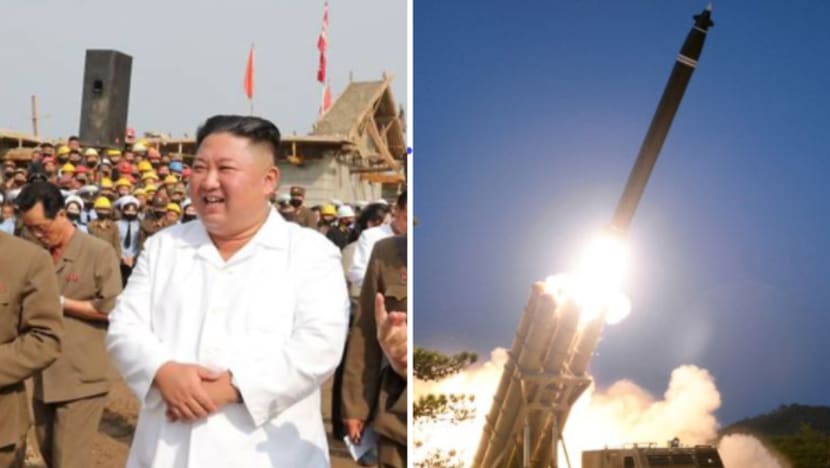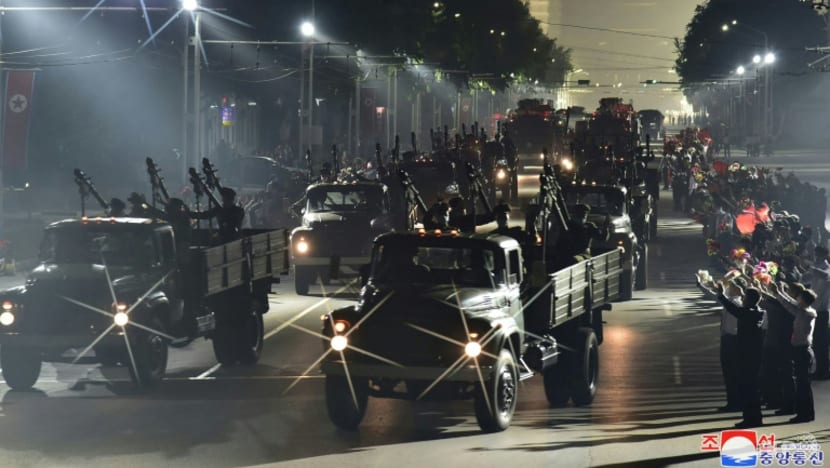North Korea has made impressive strides in missile technology, which is bad news for the US, South Korea and the world, says Professor Robert E Kelly.

SEOUL— With a slew of North Korean missile tests this week, the world has once again been reminded of our limits to constrain the hermit kingdom’s behaviour.
For the most part, Pyongyang does what it wants, and the rest of the international community just has to live with it.
In the last few days, North Korea tested cruise missiles and then ballistic missiles. The latter violates United Nations Security Council resolutions.
And yet the response of South Korea, the US and Japan has been muted, in part because their options are so limited.
IMPRESSIVE IMPROVEMENTS IN MISSILE TECH
North Korea’s technical improvements are undeniably impressive. The difference between these missile types is the range and flightpath.
A cruise missile, like the one launched on Monday (Sep 13) is basically a missile with a jet engine attached to it. Like a passenger plane, it flies in a straight line toward a target.
The advantage of such a weapon to North Korea is its manoeuvrability, plus its ability to evade radar and penetrate defences. But cruise missiles usually have a short or medium range.

The North Korean news service said this weapon can travel about 1,000 miles (or 1,600 km). The puts all of Japan, including US military bases in Okinawa, within range.
A ballistic missile, by contrast, flies in an upward then downward arc. This permits it to fly much further, although it loses the penetration advantage.
But ballistic missiles are usually heavier and carry larger payloads. This means they are capable of carrying nuclear warheads.
Critically however, the North stated this week that its cruise missiles are “strategic” too. This likely means those can carry a smaller nuclear weapon.
That, in turn, implies that North Korea is miniaturising its nuclear weapons to put them on smaller weapons systems and other delivery systems – even via train as was suggested when North Korea tested a “railway-borne missile system” on Wednesday.
NATURAL PROGRESSION OF NUCLEAR STATES
These developments are not unexpected. As North Korea’s nuclear weapons programme progresses, it will likely follow the pathway of other mature nuclear weapons states.
It first built the large, intercontinental ballistic missiles (ICBMs) forming the backbone of its strategic deterrence.
Heavy ICBMs with large nuclear weapons are the main force; they allow Pyongyang to strike the US homeland hard and therefore hopefully deter the US from warring on North Korea.
North Korea successfully tested ICBMs capable of carrying nuclear payloads in 2017, which then unleashed “fire and fury” rhetoric from the US and culminated in the Donald Trump-Kim Jong Un summit in Singapore in mid-2018.
But once that strategic capability in the largest nuclear weapons class is achieved through ICBMs, many nuclear weapons states usually proceed to construct other, smaller weapons.
North Korean commentary has emphasised this similar direction in recent years. State media has talked about submarine-launched missiles (also supposedly tested on Wednesday).
This mobile platform gives the North greater resilience against a US first strike on its fixed ICBM sites.
This year, Kim also mentioned tactical nuclear weapons: Nukes with a smaller yield – with energy released by the explosive chain reaction – which might be used on a battlefield against targets like clustered US soldiers on Okinawa.
Cruise missiles also fit this strategy. Once Pyongyang has enough ICBMs for strategic national deterrence, it makes sense to move on to shorter-range but faster vehicles.
THE BAD NEWS
All this gives us important, if unfortunate, information: That North Korea has enough ICBMs that it can start considering other, more flexible delivery platforms. That it has sufficient nuclear warheads to begin experimenting with putting them on these new, smaller platforms. And that its ability to miniaturise warheads is progressing.
This could mean that its next stop is ultra-small warheads that fit the heads of artillery shells – which both the US and Soviet Union achieved but began dismantling with disarmament talks in the 1990s.
This signals that a potential future war between North and South Korea could be a conflict involving both conventional and nuclear forces.
In that scenario, North Korea might consider using low-yield, tactical nuclear weapons to compensate for its conventional disadvantages.

LIMITED OPTIONS
So what can the world do? Militarily, our options are limited.
Then US President Donald Trump threatened a strike on the North in 2017 – a “bloody nose” air raid but this was seen as risky and rejected at the time.
Yet the strategic situation has worsened since. At this point, it is highly unlikely the US or South Korea will launch a preemptive strike on North Korea.
The best military option now is missile defence – and not just for South Korea, America and Japan, but for much of the East Asia region.
Missile defence, as a defensive posture, sends a benign signal, indicating an intention to protect and not to strike, compared to countries building up similar offensive missile capabilities – a choice that could spark an arms race.
But missile defence is expensive, with South Korea’s Terminal High-Altitude Area Defence system costing billions. Each part of a missile defence system also targets different altitudes and obtaining full coverage with a few systems is tricky. Moreover, China is opposed to any regional defence system, which it sees as a US scheme to counter Chinese missiles.
A better option would be some kind of negotiated limits on the North Korean programme. But this runs into the usual problems, not least is North Korean trustworthiness. Would North Korea follow through on denuclearisation given how valuable the nukes are to its regime?
That is unlikely. North Korea is surrounded by states at best ambivalent about it – Russia, China – and at worst, openly hostile – South Korea, Japan and the US.
Its economy is small, so its ability to sustain a conventional arms race is highly constrained. In such a punishing strategic environment, nukes are very valuable. They keep North Korea’s many adversaries and neighbours – including Beijing – at bay.
BIGGEST HURDLES TO NEGOTIATED DEAL
And so the most predictable dynamic will soon unfold: If asked to negotiate, North Korea will demand enormous concessions for even the smallest denuclearisation steps.
Nukes are so valuable to Pyongyang, they will not give them up simply for sanctions relief. Bear in mind that Trump had offered this very carrot at the Hanoi summit in 2019, and Pyongyang rejected it right away.
Kim wants a lot more, likely some mix of the following: A huge cash pay-off, diplomatic recognition by the US, the withdrawal of US forces from South Korea, the formal end of the legally unresolved Korean War, the end of the South Korean-US alliance – and with sanctions relief thrown in.
These are large concessions the US is nowhere near to accepting politically.
There is little debate in the US foreign policy community on such options and even a lesser realisation of just how much the North Koreans will demand to give up any of their warheads or missiles.
So the stalemate rolls on, and tests like this week’s will recur.
